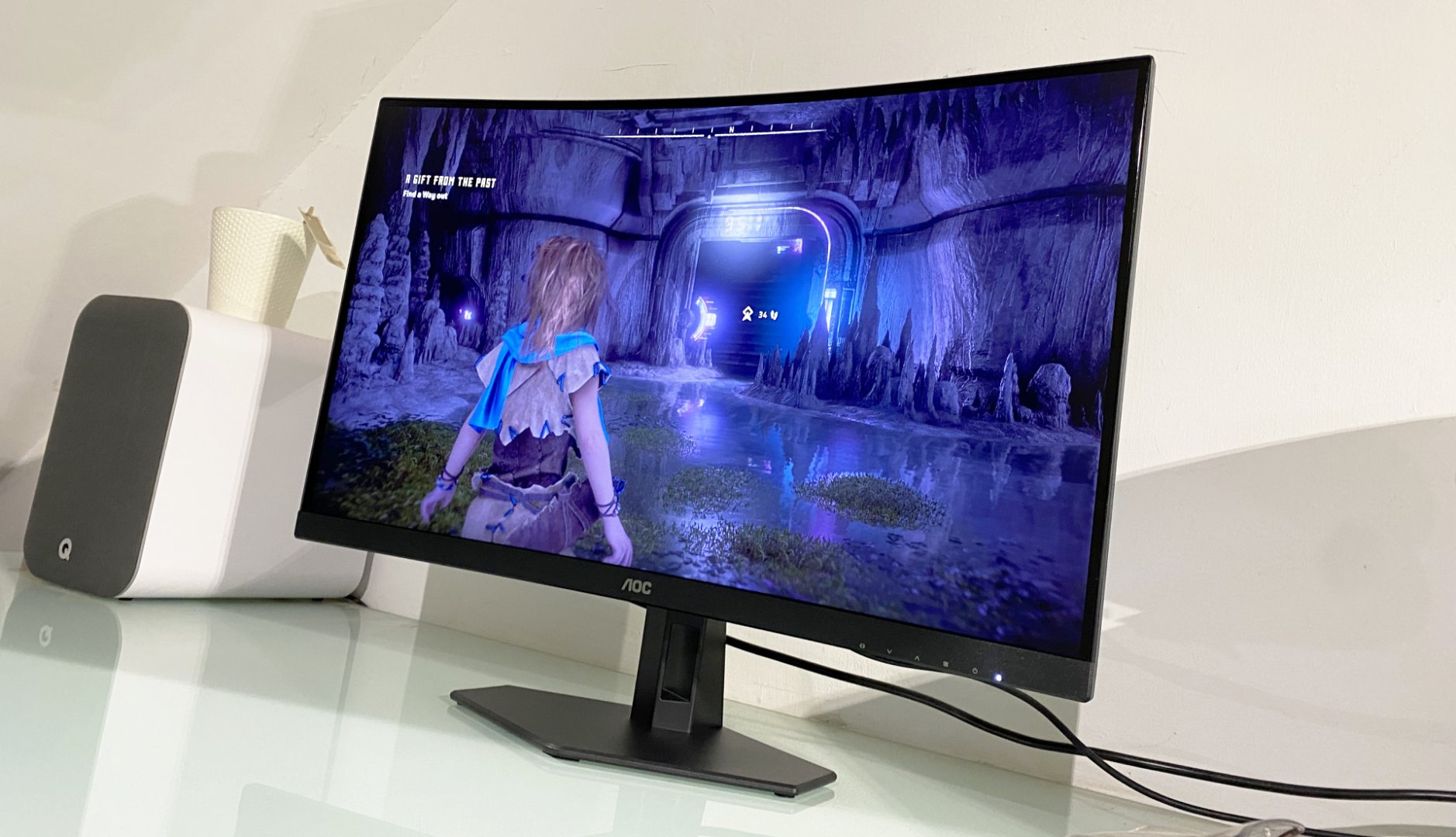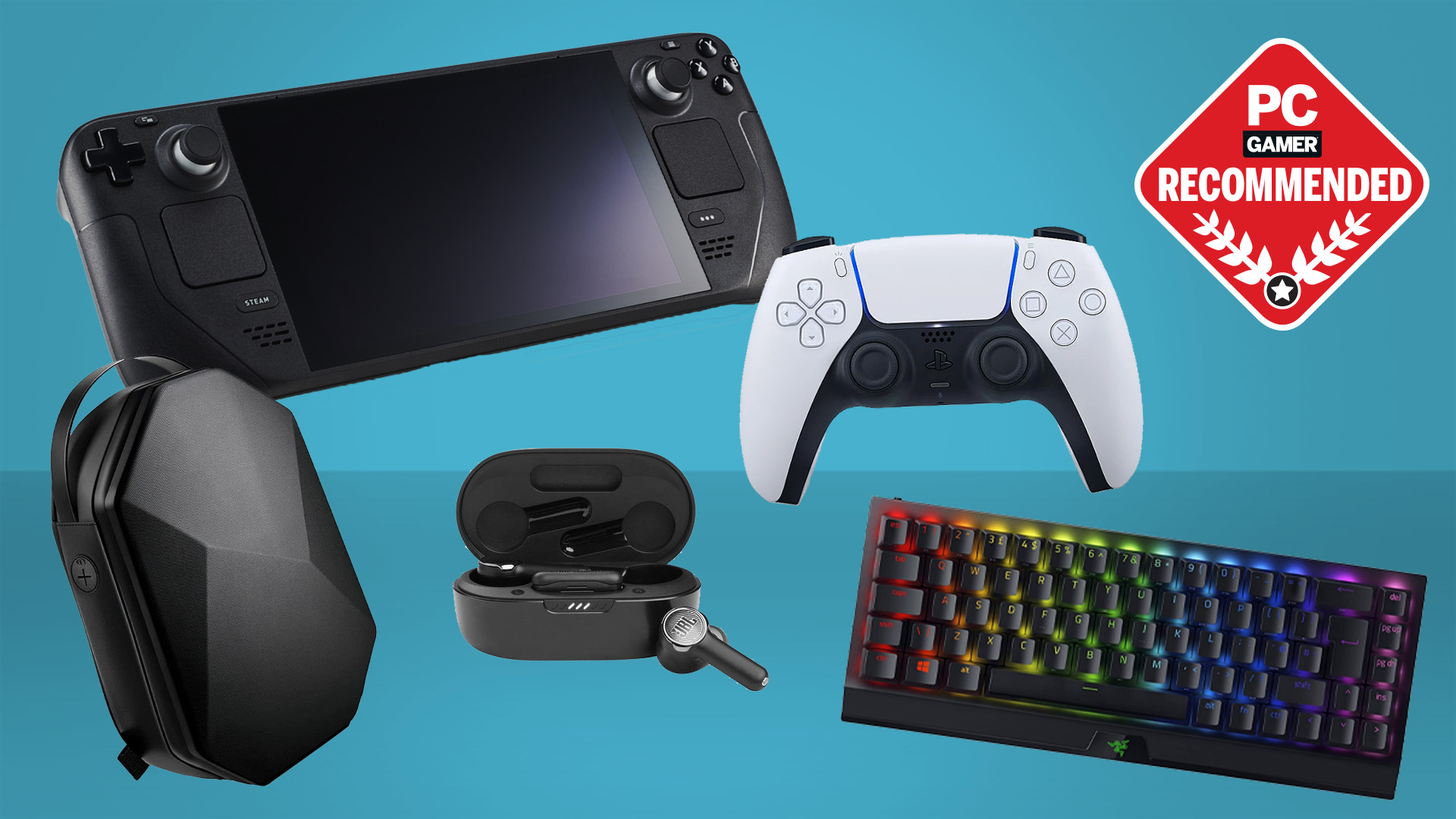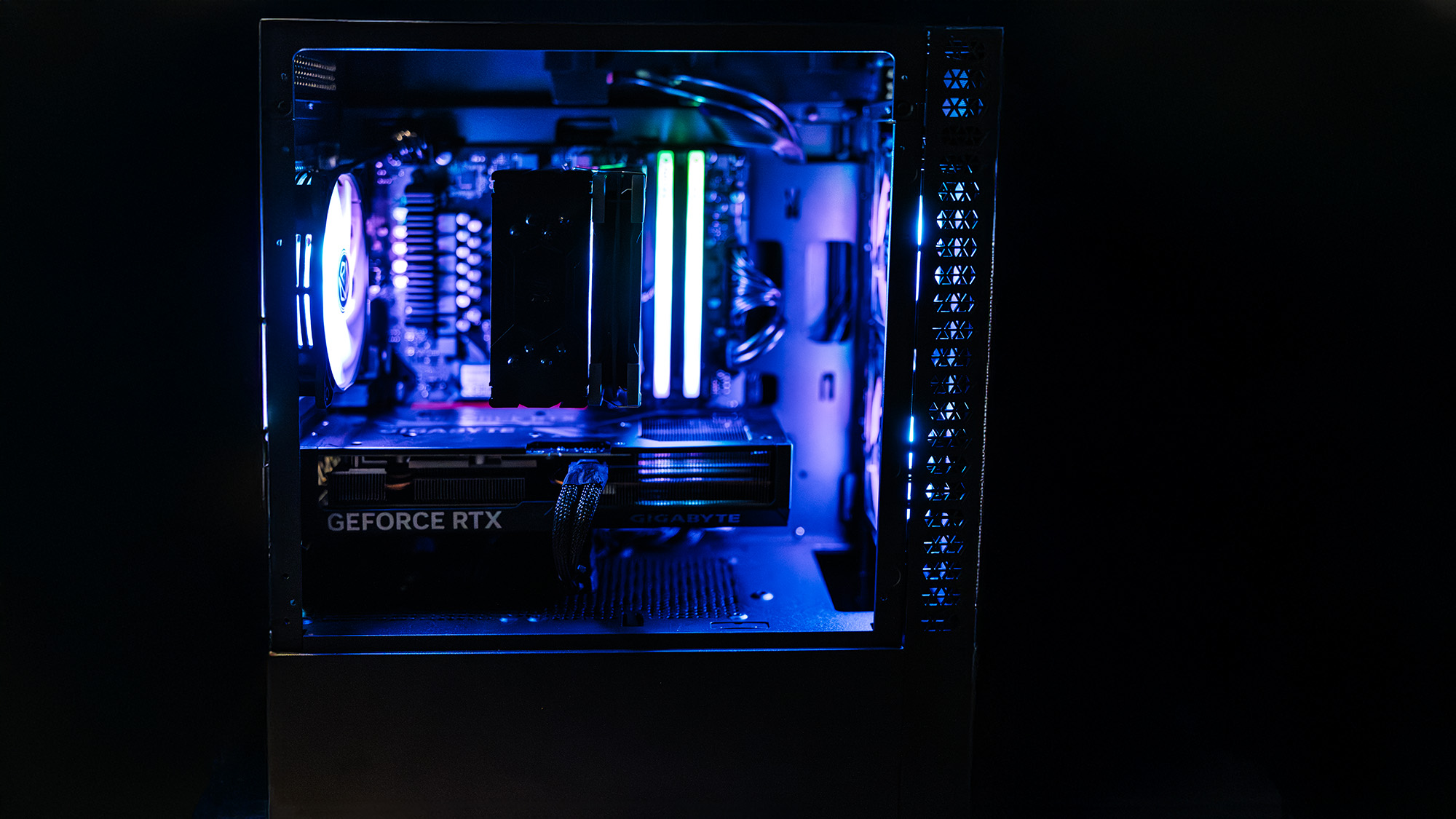Our Verdict
If you're on a tight budget, it's great that a 280 Hz monitor like this is now so affordable. The most obvious downsides are low resolution and mediocre response, but for the money those aspects are acceptable. Our main reservation is that you can have a 1440p 144 Hz panel for only a little more money.
For
- Pleasingly affordable
- Nicely calibrated
- Low latency
Against
- Chunky pixel density
- Mediocre pixel response
- Unusable HDR mode
PC Gamer's got your back
Remember the days when high-refresh gaming meant taking out a new mortgage? Thankfully, they're gone as the new AOC Gaming C27G4ZXE proves. This is a fully 280 Hz gaming monitor for well under $200. Hooray.
Of course, at this price point something has to give. Actually, with the AOC Gaming C27G4ZXE, plenty has to give. The most obvious casualty to cost reduction is resolution. This 27 incher is a mere 1080p panel, so that's 1,920 by 1,080 pixels.
The result is a very modest pixel density of just 82 DPI. We'll come back to the impact that has on image quality. But up front it's worth noting that while this relatively low resolution is a necessary compromise to hit the price point, it actually makes sense from a price-performance perspective.
If you're shopping monitors at this end of the market, safe to assume you're not running a $1,000 GPU. So, a lower resolution will likely be a better fit with your graphics card, especially if you want to make use of that 280 Hz refresh.
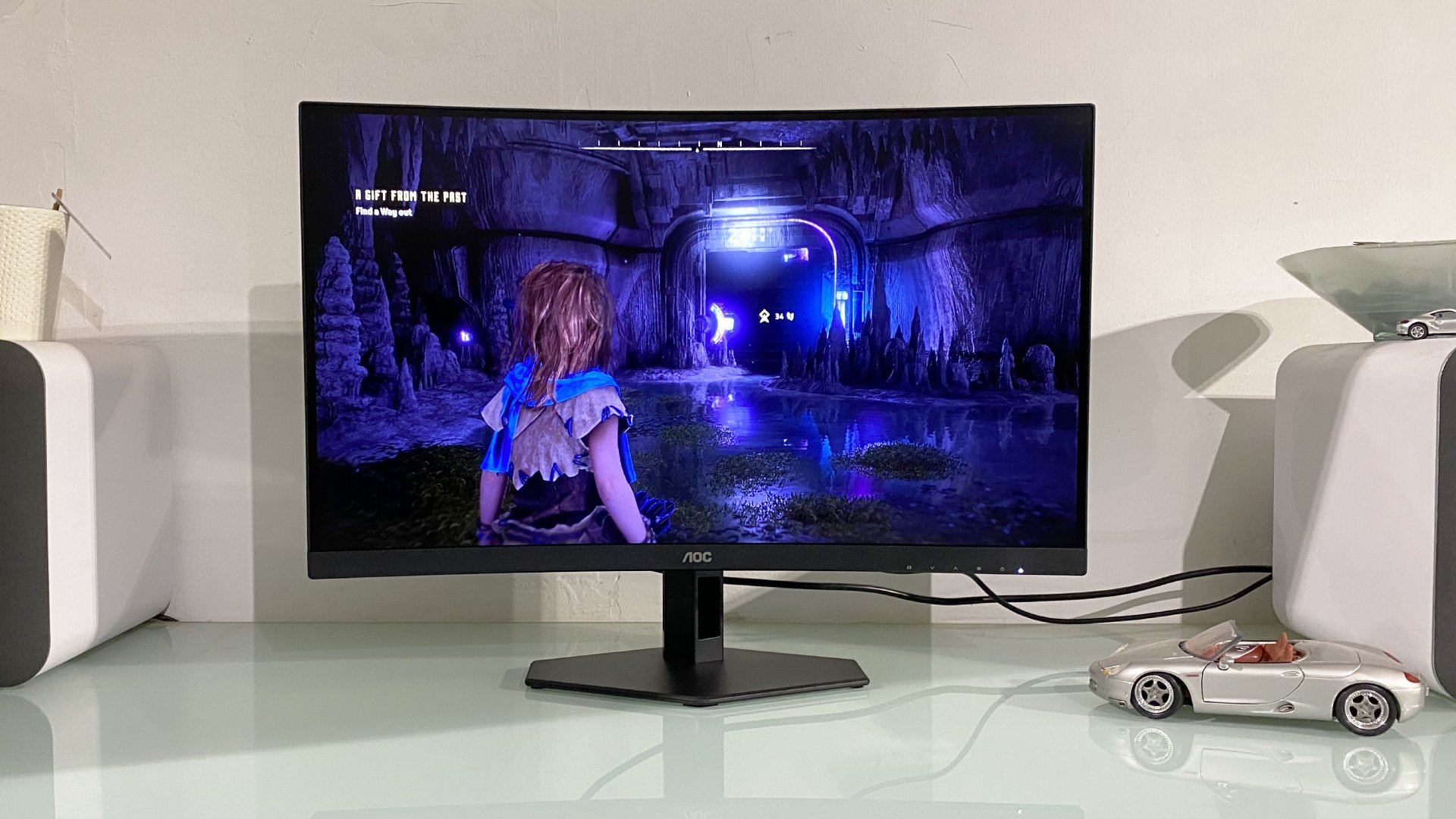
Screen size: 27-inch
Resolution: 1,920 x 1,080
Brightness: 300 nits full screen
Response time: 0.3 ms MPRT, 1 ms GTG
Refresh rate: 280 Hz
HDR: HDR10
Features: VA panel, HDMI 2.0 x2, DisplayPort 1.4
Price: $175 (estimated) | £159 (Hub model)
Anyway, the next concession is a VA rather than IPS panel. As we routinely explain, VA tends to have worse response and viewing angles compared to IPS, but better contrast. This isn't always the case, but the slower pixel response can obviously be a bit of a bummer on a gaming display.
Those limitations aside, the AOC Gaming C27G4ZXE is also a little stingy when it comes to build, ergonomics and connectivity. This monitor feels a bit cheap and the stand only offers tilt adjustment.
That said, it doesn't actually look too poverty stricken thanks to some nice geometric design for the stand base and rear of the screen enclosure. This isn't a totally anonymous black square, some effort has gone in. The 27-inch panel's gentle 1500R curve also adds perhaps the slightest frisson of upmarket consumer electronics.
At the very least, it's a decent looking thing sitting on your desk when you consider the price point. It just doesn't feel all that robust. Again, you can't really expect much more at this price point.
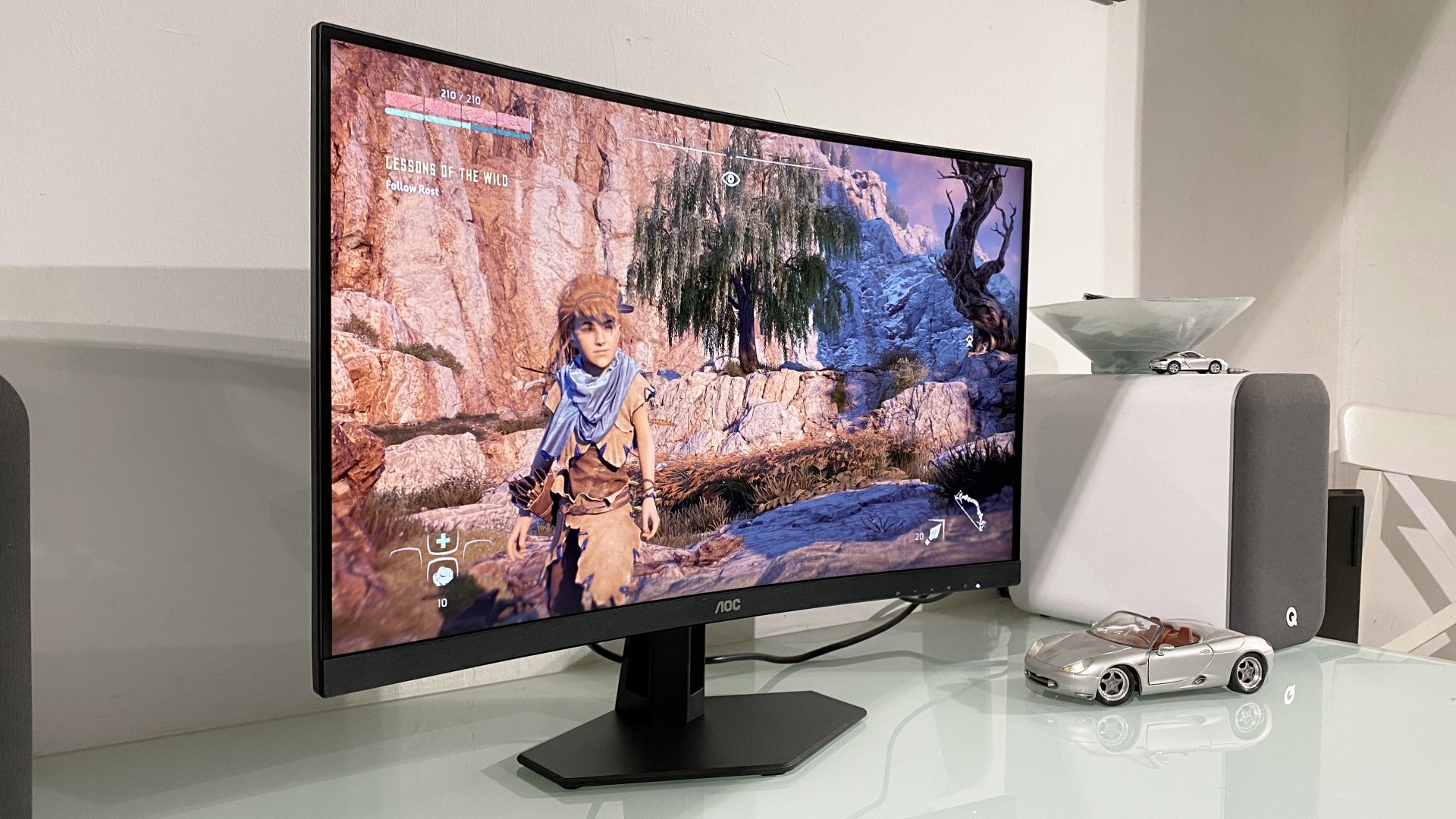
As for the connectivity shortfall, well, you get two HDMI 2.0 ports and single DisplayPort input. What you don't get is any kind of USB hub. But try finding an equivalent monitor with a USB hub from a big brand at similar money. You'll struggle.
The final obvious casualty of the low price point is HDR support. Honestly, it's the merest of flesh wounds. You do get basic HDR 10 support. But with a maximum brightness of 300 nits and no local dimming, this is clearly not a true HDR display. But then neither is any monitor with entry-level HDR400 certification.
Actually, I'd argue very few LCD as opposed to OLED monitors are truly capable of high dynamic range rendering. At least with the AOC Gaming C27G4ZXE you can theoretically decode HDR content with correct colors. That's something.
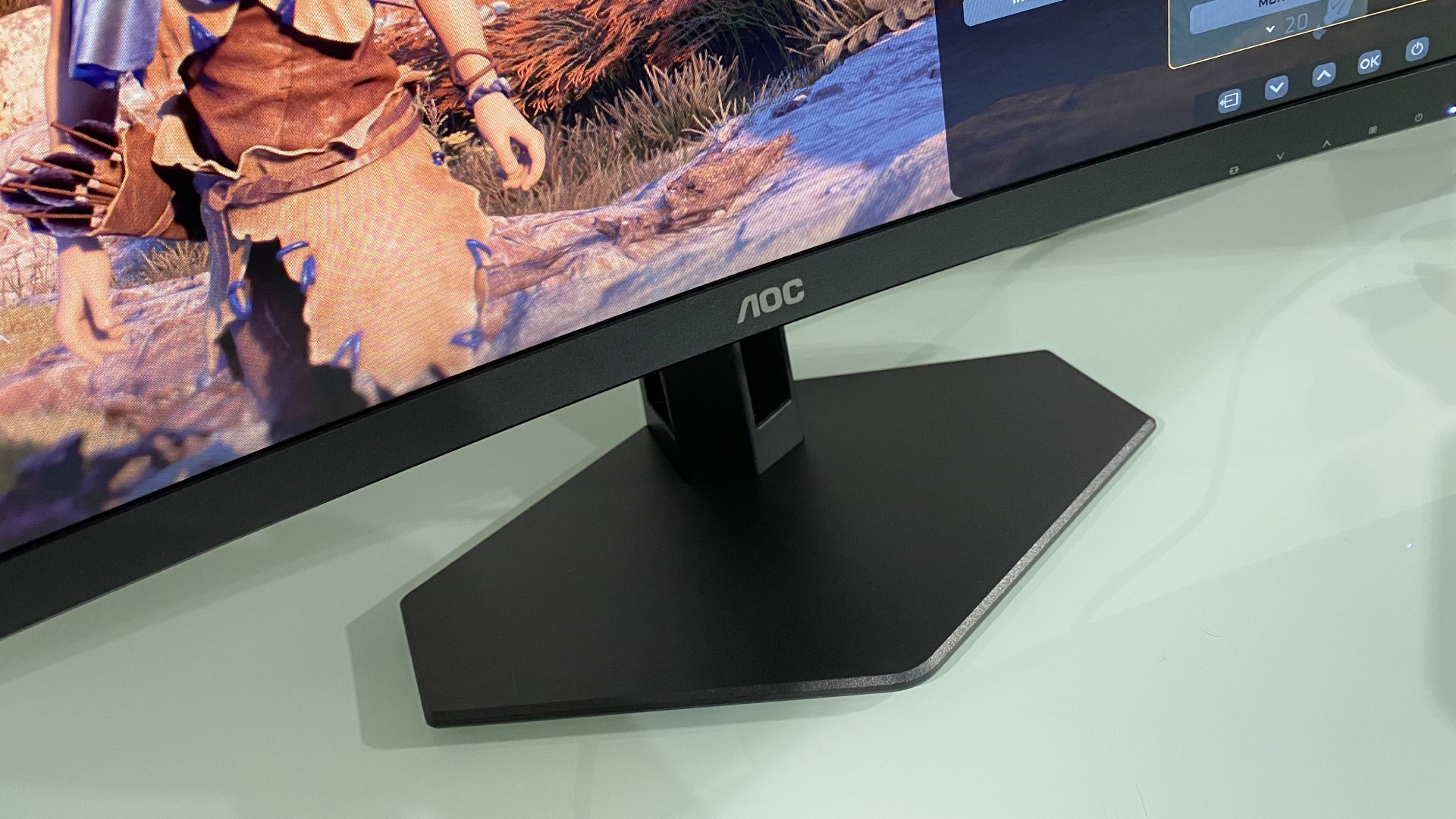
But what of the actual image quality? First impressions are none too shabby. The C27G4ZXE may only be rated at 300 nits, but it's fairly bright and punchy. The VA panel tech helps with that impression. VA panels have much better contrast than IPS and that contrast between brighter and darker tones makes a screen look subjectively more vibrant and dynamic.
The C27G4ZXE may only be rated at 300 nits, but it's fairly bright and punchy.
AOC has actually calibrated this thing pretty well, too. The colors in default sRGB mode are bob on, which isn't always the case with cheap VA monitors. They are often set up to be over-saturated.
Sadly, that deft calibration doesn't extend to HDR content. Generally, this monitor looks rather dull in HDR mode, it's actually more vibrant in SDR mode which obviously isn't right. What's more, SDR colors in HDR mode are a mess. Ultimately, the HDR mode is best avoided unless you absolutely have to use it. That's not a huge disappointment given the price point. But it does mean that the AOC Gaming C27G4ZXE is very much best viewed as a non-HDR panel.
If those elements of the static image quality are decent, what about when things get moving? The 280 Hz refresh definitely translates into snappy responses to control inputs. The latency is great given the price point. So, this monitor is a great choice for online shooters and esports on a budget.
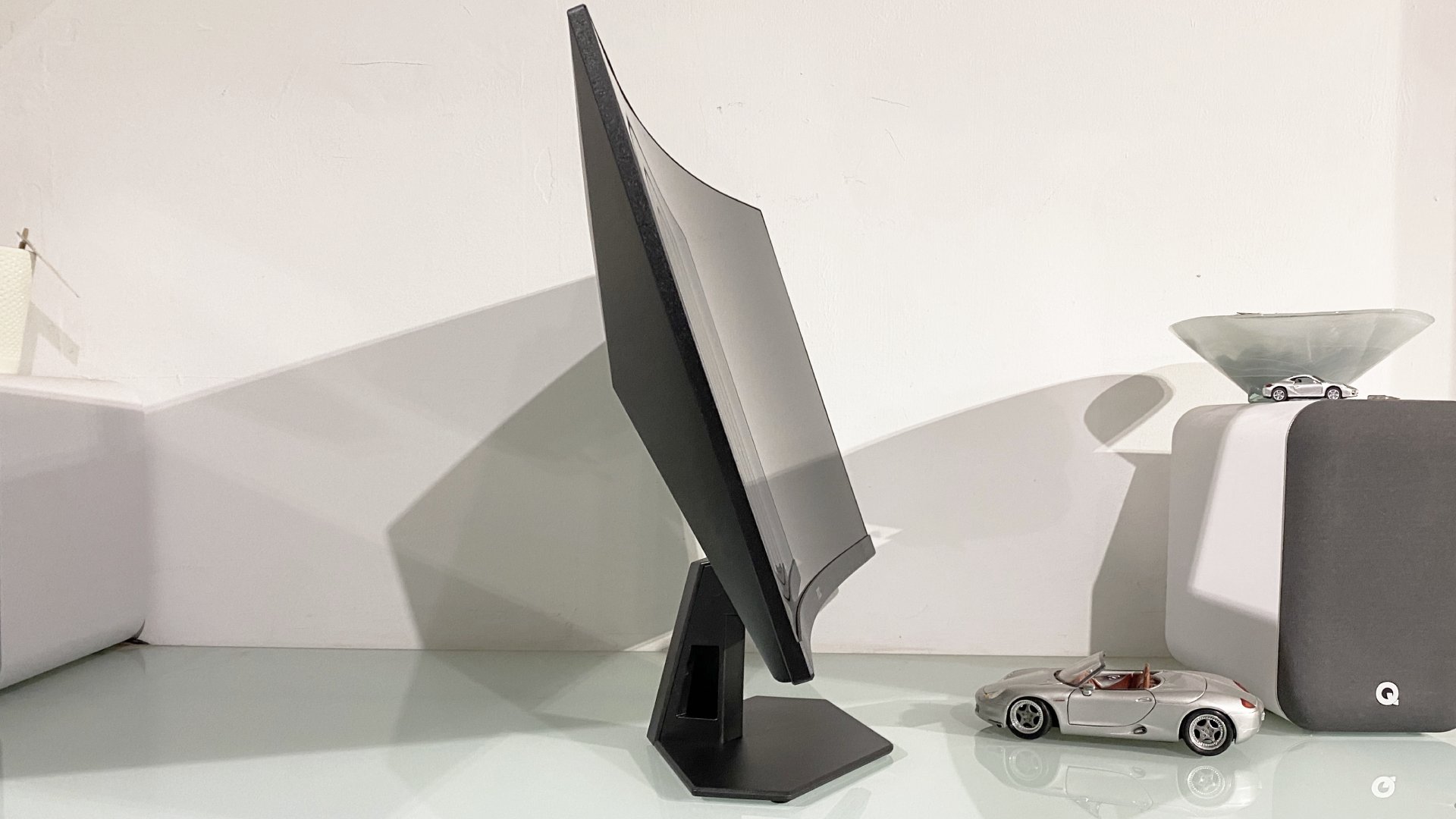
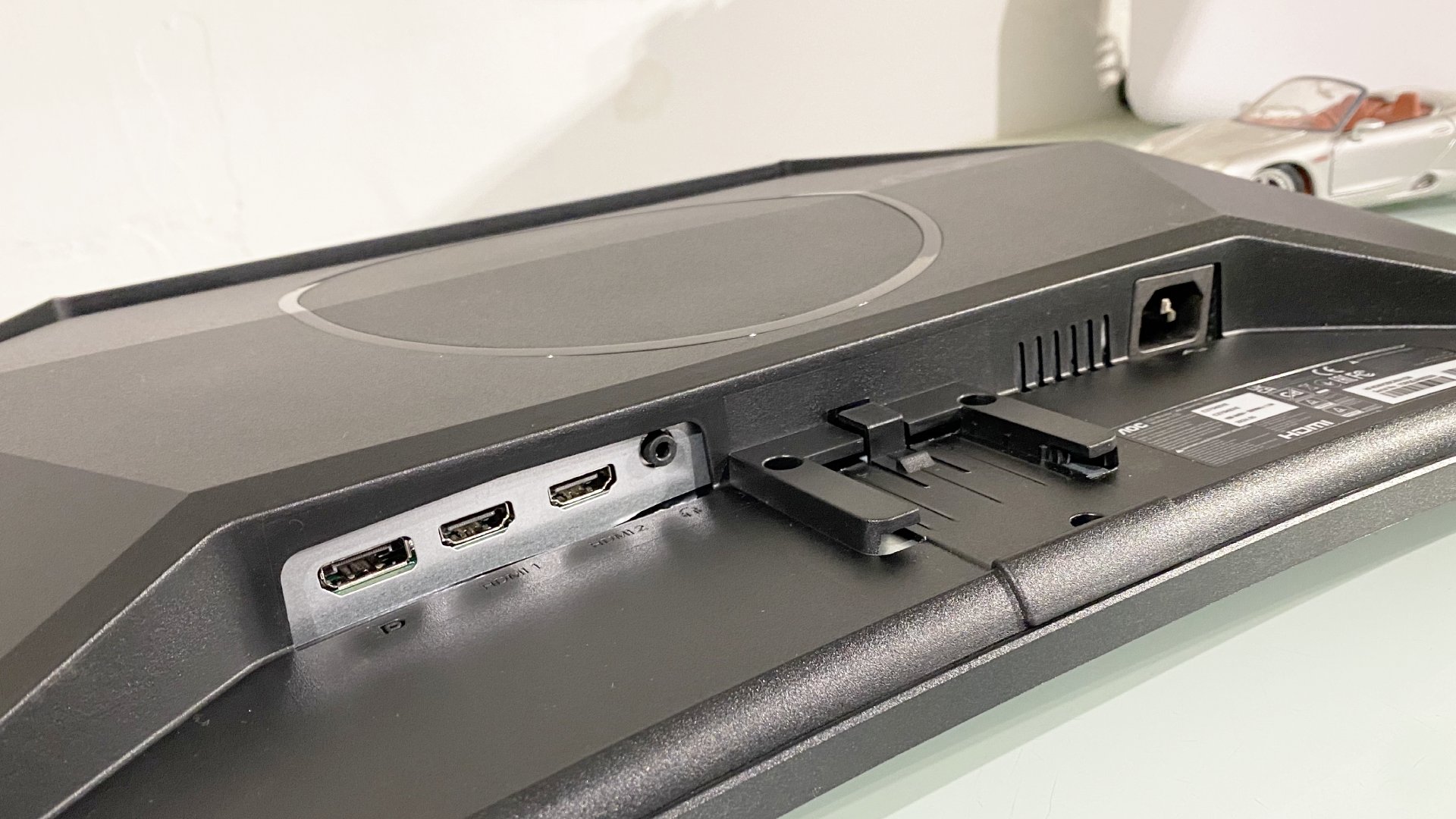
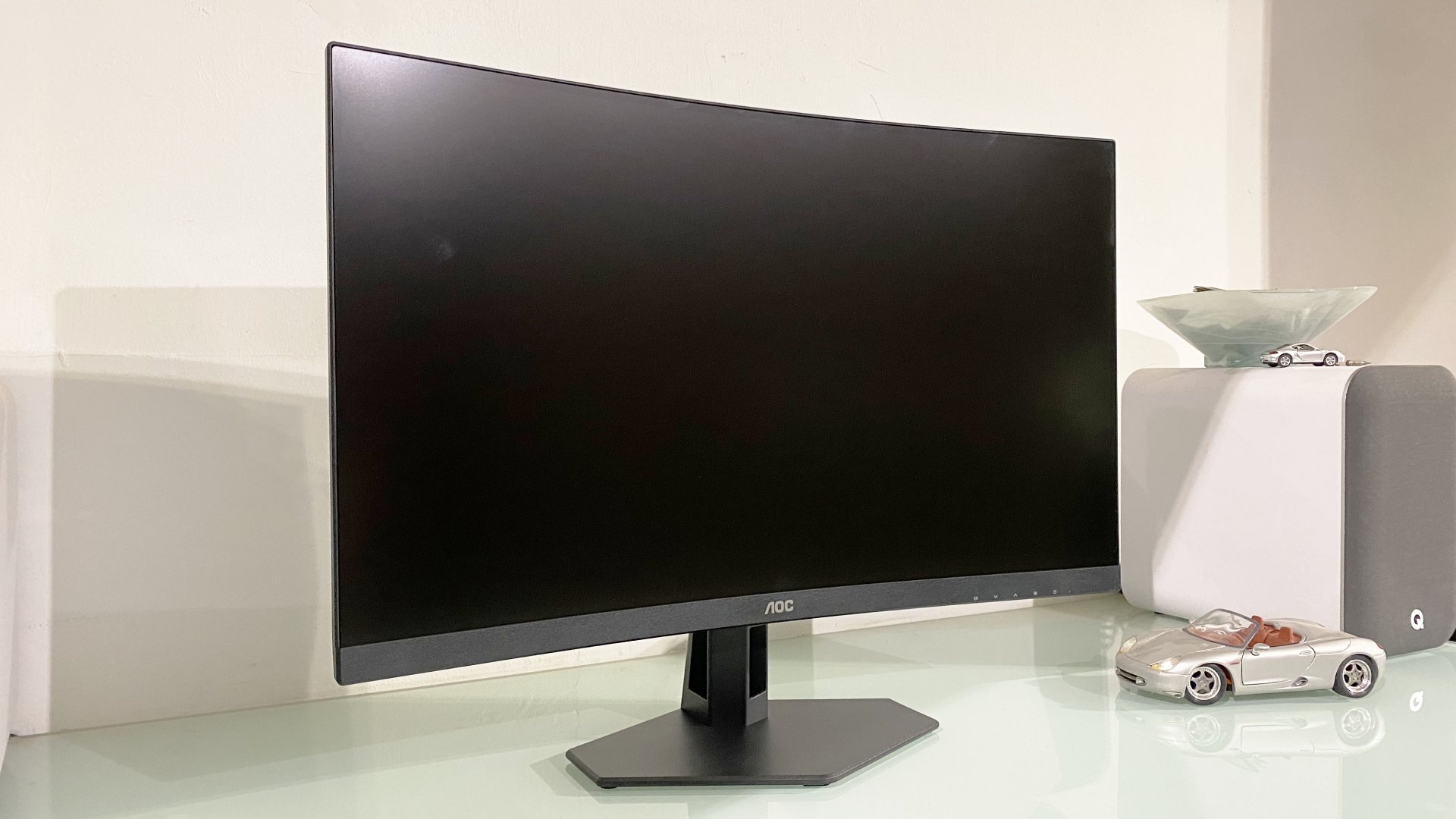
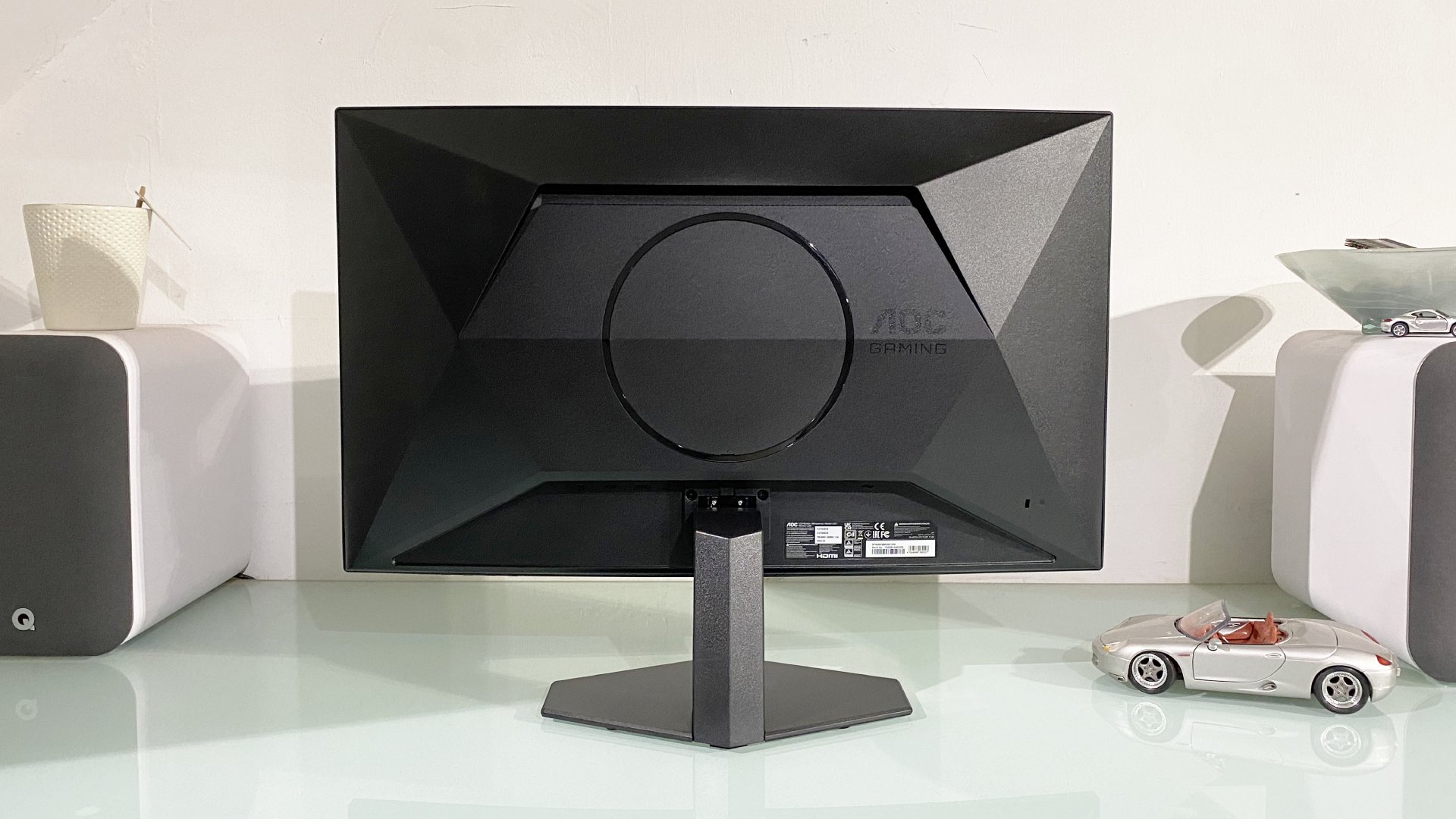
Less impressive is the pixel response. AOC quotes some very impressive figures here with 0.3 ms MPRT and 1 ms GTG response times. You also get four levels of pixel-accelerating overdrive in the OSD menu to help you tune the response.
Sadly, AOC hasn't delivered pixel response performance beyond expectations.
Sadly, however, this monitor conforms to the cheap VA norm. All but the quickest overdrive mode suffers from at least a little visible smearing and blurring. As for the quickest option, that largely eradicates the smearing only to swap it for a touch of overshoot and inverse ghosting.
Unfortunately, you can actually see that overshoot in games in the form of texture colors shifting as you move your mouse and the pixel overshoot their target colors. It's not super obvious, but it is there and once you see it, it can't be unseen.
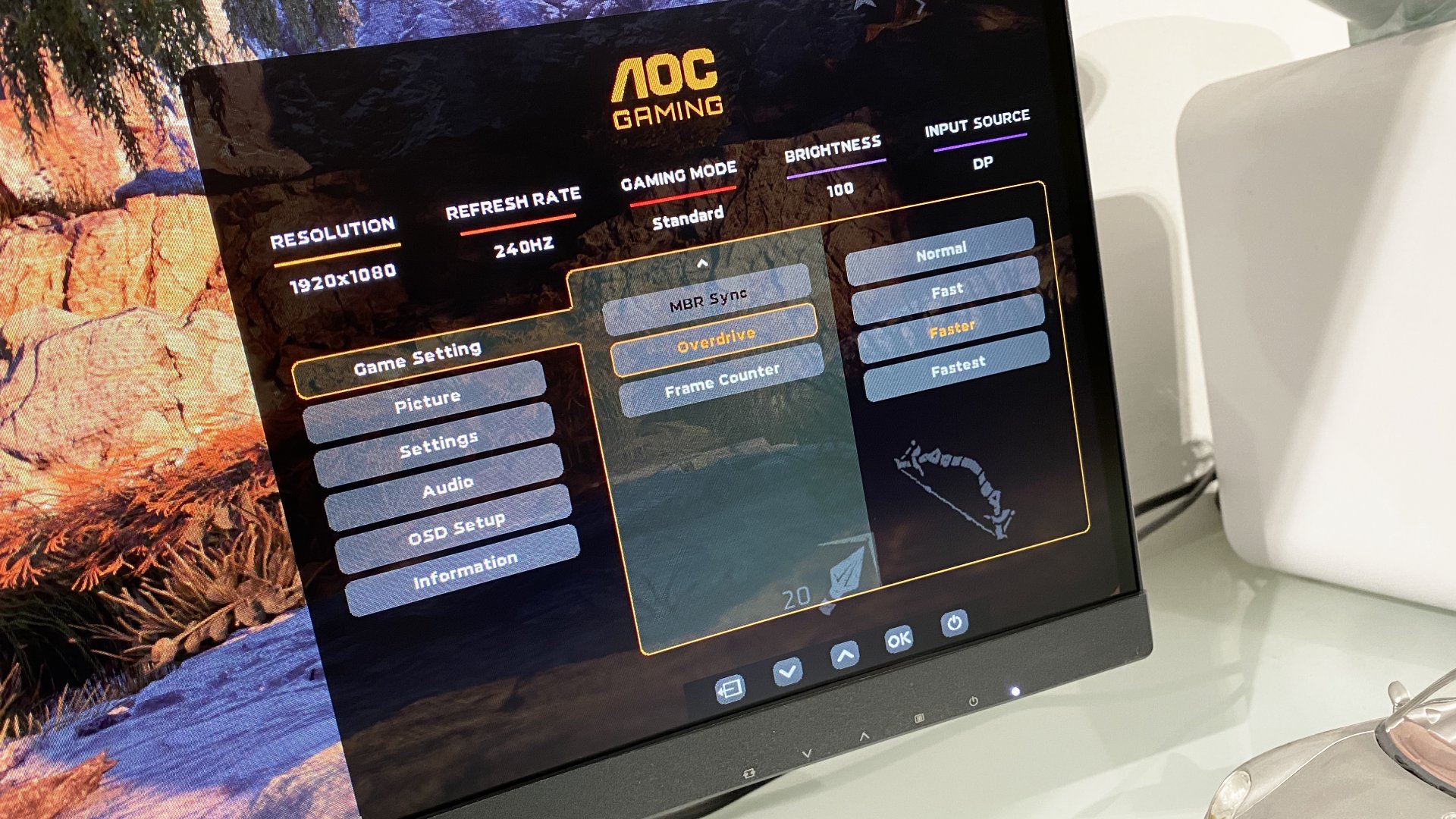
Of course, this is the norm for a VA panel at this price point. So, it absolutely isn't a deal breaker. But if you were hoping that AOC had done something magical and somehow delivered pixel response performance way beyond expectations, well, that simply hasn't happened.
Apart from response, this monitor's other obvious weakness is the aforementioned pixel density. It's a tricky aspect to critique. The price point ultimately dictates 1080p. A 1440p 280 Hz panel at this price point is too much to ask.
And as we said, 1080p is actually a good match in terms of GPU load given the low price point here. But that 82 DPI pixel density is awfully ugly on the Windows desktop. It makes for craggy, rough looking fonts and a generally pretty pixelated vibe.
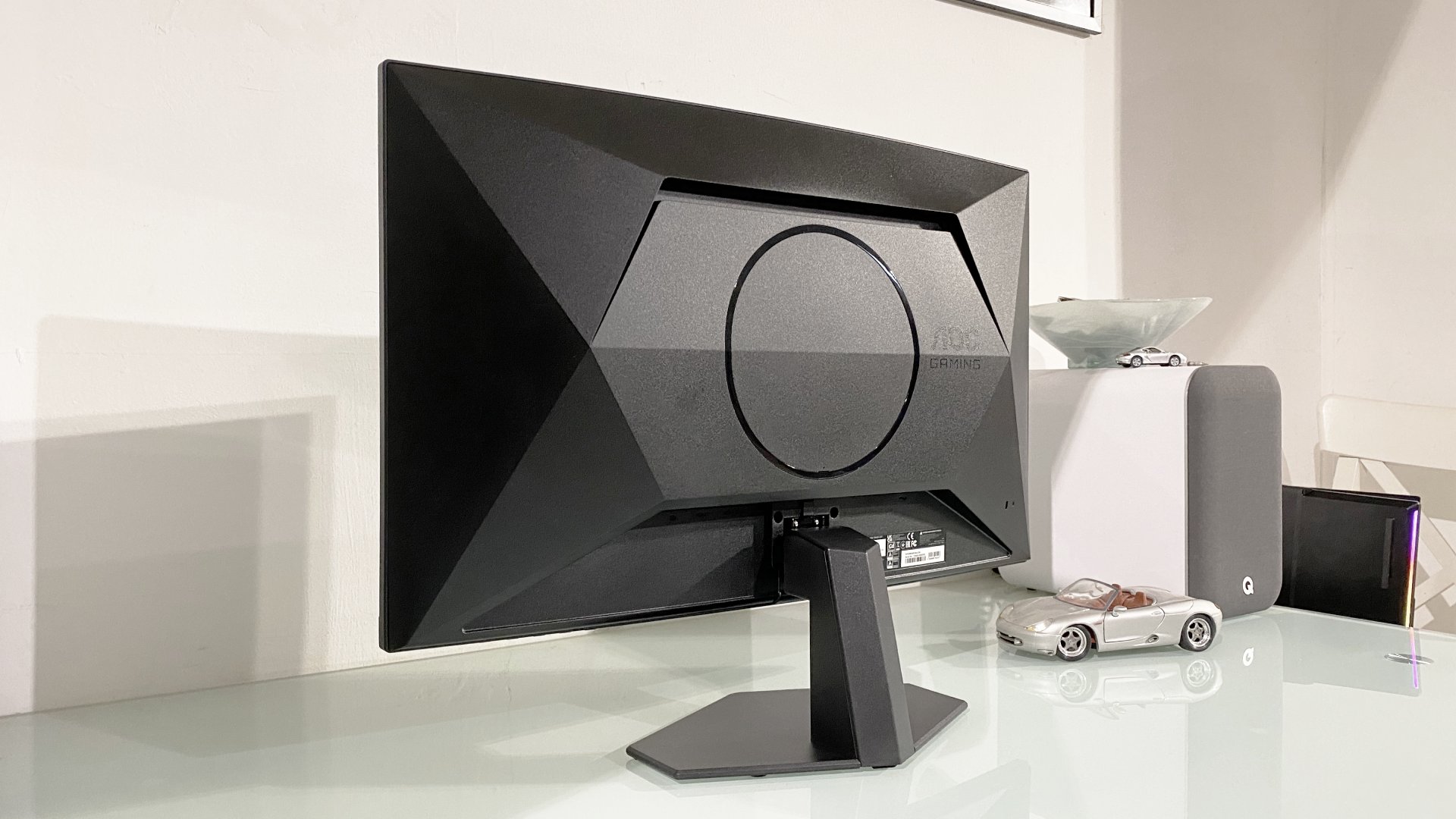
The saving grace is that games don't actually look too bad when it comes to visual detail. You're still getting full HD and if you switch on upscaling, such as Nvidia DLSS or AMD FSR, the slight softening effect helps to smooth out the craggies that are consequent from the fairly large pixels.
As a final note, the 1500R panel curvature is really neither here nor there. There's really very little benefit to a curved panel on a 27-inch 16:9 screen. But equally the curve is slight enough not to be a distraction.
Overall, then, this is a decent display for the money. 280 Hz and 1080p is a sensible combination and makes for a snappy feeling gaming experience even with a commensurately budget GPU. The low DPI look isn't great, but it's a reasonable compromise at this price point.
✅ You want high refresh gaming on the cheap: The 280 Hz from an established band at this price point makes low-latency gaming pleasingly accessible.
❌ You want crispy visuals: 1080p on a 27-inch panel makes for mediocre pixel density.
The caveat to that is that were it our money, we'd prefer to stretch to around $200 if at all possible and go for a 1440p 144 Hz option. The refresh is lower, but the pixel density is a lot nicer.
If there is an element that's hard to really get on board with even at the price point, it's the mediocre pixel response. Admittedly, you'd do well to find a competing screen that's much better. So, the problem isn't unique to this AOC. But the response really isn't great. So, chalk that up as something we'd like to see improve industry-wide on this class of display as opposed to something AOC specifically has messed up.
Actually, on that note, if money really is tight and $200 for a 1440p monitor isn't an option, we'd probably lean towards a 24-inch IPS monitor, maybe even one running at a lower 160 Hz refresh rate. You'll get better response and slightly better pixel density, albeit on a smaller panel.
Ultimately, there are no perfect choices here. And of the available 27-inch 1080p gaming monitors in the budget class, the AOC Gaming C27G4ZXE is absolutely a worthy contender.
If you're on a tight budget, it's great that a 280 Hz monitor like this is now so affordable. The most obvious downsides are low resolution and mediocre response, but for the money those aspects are acceptable. Our main reservation is that you can have a 1440p 144 Hz panel for only a little more money.

Jeremy has been writing about technology and PCs since the 90nm Netburst era (Google it!) and enjoys nothing more than a serious dissertation on the finer points of monitor input lag and overshoot followed by a forensic examination of advanced lithography. Or maybe he just likes machines that go “ping!” He also has a thing for tennis and cars.
